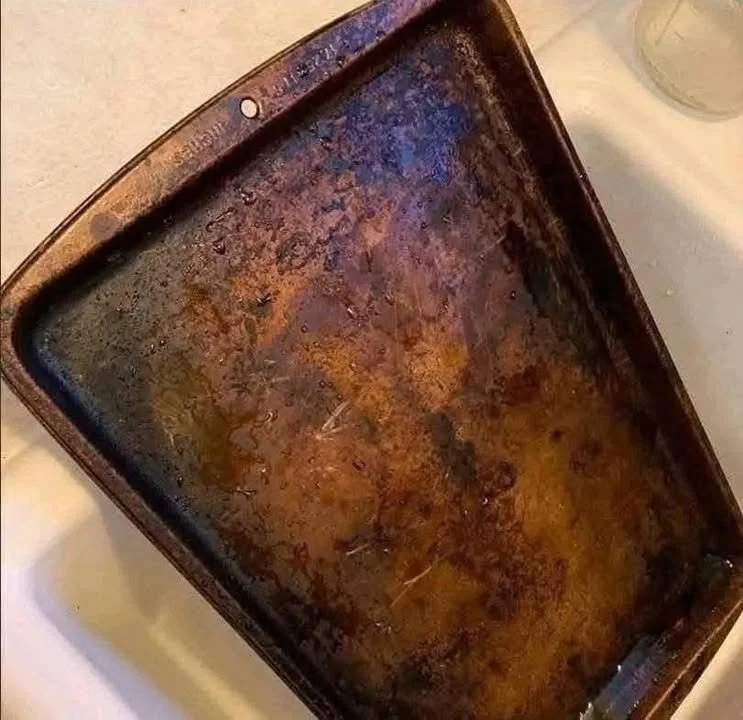German Sauerkraut


Easy, Traditional, Healthy Homemade German Sauerkraut — A Classic Fermented Cabbage Recipe
Introduction (Storytelling + Emotion)
There’s something about the tang of German Sauerkraut that always takes me back to my grandmother’s kitchen — the warm light, the smell of cabbage and caraway, and the sound of family laughing around a long wooden table. I learned to make sauerkraut watching her press the shredded cabbage into a crock, then waiting patiently as it transformed into something bright, tart, and utterly comforting.
This homemade German Sauerkraut is perfect for weeknight dinners, cozy Sunday family meals, or holiday spreads (think roast pork or Thanksgiving sides). It’s an easy, healthy project that rewards patience — and the results are worth every day of waiting.
🧂 Ingredients (for one standard 1–2 quart / liter jar batch — makes about 1 quart/1 L finished sauerkraut)
- 2 medium heads green cabbage (about 4–5 lbs / 1.8–2.3 kg whole cabbage) — yields ~2 lbs / 900 g shredded
- 1–1.5 tablespoons kosher salt (about 18–25 g) — see salt note below
- 1 teaspoon caraway seeds (optional, classic German flavor)
- 1–2 apples, peeled and grated (optional, adds sweetness)
- 1 small onion, thinly sliced (optional)
- 4–6 juniper berries (optional, traditional in some German recipes)
- Filtered or boiled-and-cooled water (only if needed to keep cabbage submerged)
- Optional for cooking/serving: 4–6 oz (100–150 g) smoked bacon or pork shoulder, 1 tbsp butter, 1/2 cup apple cider or stock
Salt note: Use about 1.8–2% salt by weight of shredded cabbage. A handy rule of thumb is roughly 1 tablespoon (18 g) kosher salt per 2 lbs (900 g) shredded cabbage. If using table salt, reduce slightly.
👩🍳 Directions
Fermented (traditional) German Sauerkraut — step-by-step
- Prepare the cabbage: Remove outer leaves, quarter each head, and core. Shred finely with a knife, mandoline, or food processor.
- Weigh (optional): If you want accuracy, weigh your shredded cabbage and calculate salt at ~1.8–2% of that weight. Otherwise, use the guideline above.
- Mix with salt: In a large bowl, toss shredded cabbage with salt. Add caraway seeds, grated apple, sliced onion, and juniper berries if using. Let sit 10–15 minutes to soften.
- Massage and bruise: Use clean hands to squeeze and massage the cabbage for 5–10 minutes until it releases juices and becomes limp. You should see a brine forming.
- Pack into jar/crock: Pack the cabbage tightly into a clean fermentation jar or crock. Press down firmly (using a tamper or the back of a spoon) so the brine rises above the cabbage and no air pockets remain. Leave ~1–2 inches (2–5 cm) headspace.
- Weigh it down: Place a weight (a smaller jar filled with water, a fermentation weight, or a clean stone) to keep cabbage submerged under the brine.
- Cover: Cover with an airlock lid or a clean cloth secured with a rubber band to allow gases to escape and keep dust/insects out. If using a sealed jar, “burp” it once daily.
- Ferment: Let ferment at room temperature (60–72°F / 16–22°C) for 1–4 weeks. Taste at 1 week, then every few days until it reaches the tanginess you like. Warmer temps speed fermentation; cooler temps slow it down.
- Move to fridge: When it’s ready, transfer to the refrigerator. Properly fermented sauerkraut keeps in the fridge for several months.
Cooked (quick) German-style sauerkraut for serving
- Optional step: For a warm side, sauté 4–6 oz diced smoked bacon in a pot until browned. Remove excess fat.
- Add sauerkraut: Add 2–3 cups of fermented sauerkraut (drain if very wet), 1/2 cup apple cider or stock, and a bay leaf. Add a tablespoon of butter if desired.
- Simmer: Cover and simmer gently 20–30 minutes to meld flavors. For softer kraut, simmer 30–45 minutes. Taste and season with pepper; salt usually isn’t needed. Serve hot alongside sausages, roast pork, or mashed potatoes.
Quick tips during fermentation: check that cabbage stays submerged (top up with salted water if necessary), skim any white scum (kahm yeast) — it’s harmless — and discard if you see pink/orange/black mold or bad smells (off or rotten).
💡 Tips & Variations
- Vegan/vegetarian: Skip bacon in the cooked version; use a splash of apple cider and a teaspoon of smoked paprika or liquid smoke for a smoky note.
- Low-carb & gluten-free: Sauerkraut is naturally low-carb and gluten-free — just check any added ingredients (like store-bought sausages or broths).
- Faster “quick” sauerkraut: Massage cabbage with salt and let sit in the fridge for 24–48 hours for a milder, quicker version (less probiotic activity but still tasty).
- Flavor variations: Add caraway (classic), fennel seeds, juniper berries, garlic, or a few slices of beet for color. Try red cabbage for a sweeter, colorful twist.
- Serving ideas: Serve with bratwurst, pork roast, Reuben sandwiches, warm potato salad, or as a tangy topping for grain bowls and tacos.
- Storing leftovers: Once fermented, store covered in the fridge up to 4–6 months. Use clean utensils to avoid contamination. For cooked sauerkraut, keep in fridge 4–5 days or freeze for up to 3 months.
- Safety: Use clean jars and utensils. If the kraut smells rotten, has fuzzy mold of unusual colors, or shows signs of contamination, discard.
🩺 Health & Lifestyle Tie-in
German Sauerkraut isn’t just comfort food — properly fermented sauerkraut contains live cultures (probiotics) and fiber that can support digestion and gut health. It’s low in calories and nutrient-rich (vitamin C, K, and minerals). Eating more homemade, nutrient-dense foods like this can be part of a healthy lifestyle that may help lower healthcare costs over time — small habits add up.
Note: Fermented foods support wellness but aren’t a cure for medical conditions. If you have immune issues or are on a low-sodium diet, check with your healthcare provider before adding fermented foods regularly.
❤️ Conclusion
If you try this easy, traditional, homemade German Sauerkraut, I’d love to hear how it turns out — tell me how long you fermented it, what flavors you added, or tag a photo on social (I’m always inspired by your variations!). Happy fermenting — and enjoy that tangy, cozy flavor that brings people together.
#fblifestyle


German Sauerkraut
Ingredients
Method
- Remove outer leaves, quarter each head, and core. Shred finely with a knife, mandoline, or food processor.
- In a large bowl, toss shredded cabbage with salt. Add caraway seeds, grated apple, sliced onion, and juniper berries if using. Let sit for 10–15 minutes to soften.
- Use clean hands to squeeze and massage the cabbage for 5–10 minutes until it releases juices and becomes limp. You should see a brine forming.
- Pack the cabbage tightly into a clean fermentation jar or crock. Press down firmly so the brine rises above the cabbage with no air pockets remaining.
- Place a weight to keep cabbage submerged under the brine.
- Cover with an airlock lid or a clean cloth secured with a rubber band to allow gases to escape.
- Let ferment at room temperature (60–72°F / 16–22°C) for 1–4 weeks. Taste at 1 week, then every few days until it reaches the tanginess you like.
- When ready, transfer to the refrigerator. Properly fermented sauerkraut keeps in the fridge for several months.
- Sauté diced smoked bacon in a pot until browned. Remove excess fat.
- Add 2–3 cups of fermented sauerkraut (drain if very wet), 1/2 cup apple cider or stock, and a bay leaf. Add a tablespoon of butter if desired.
- Cover and simmer gently for 20–30 minutes to meld flavors. Taste and season with pepper; salt usually isn’t needed.











